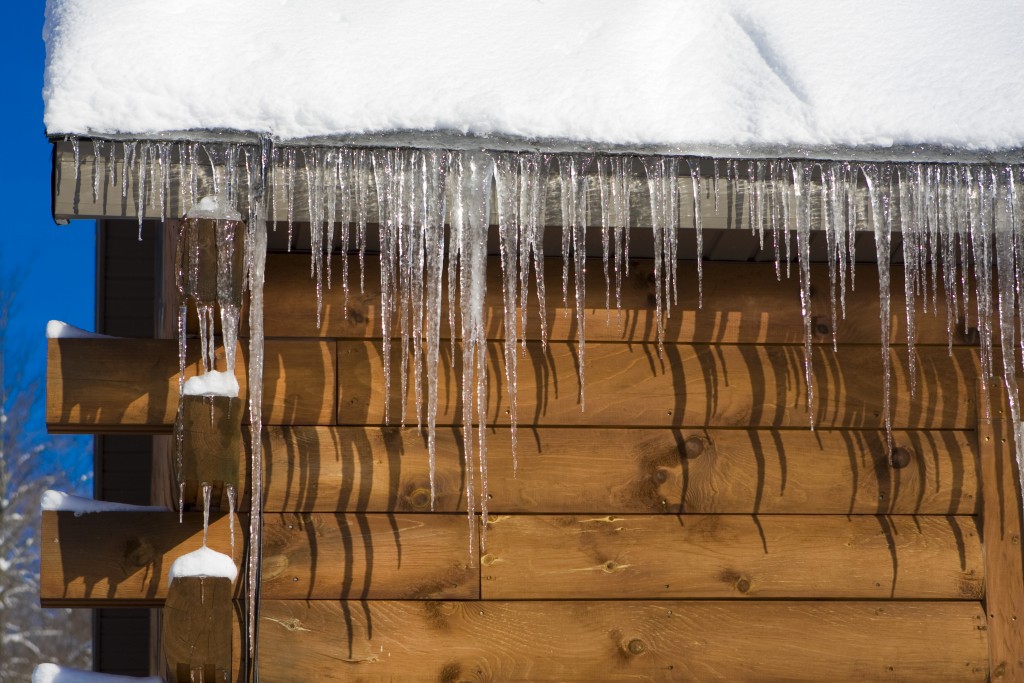An ice dam is a ridge of ice that forms on the outer edge of your roof. The ice acts as a barrier, preventing the water in the gutters from draining, which hardens and reinforces the ice dam. The water in the drainage collects, leaking into your home through the shingles and causing damage to the walls, ceiling, and insulation.
Ice dams become heavier the longer you neglect them, compromising the structure of your roof and gutters. They also present a safety hazard for people standing under the roof as the icicles threaten to break off and fall.
This problem occurs when the space under the upper roof is too warm. The snow that collects on the roof melts, and the water runs down to the roofline. The freezing temperature outside causes the water to turn to ice.
Some residential roof cleaning companies offer ice dam removal services, which can quickly solve your problem. But you can avoid this issue in the first place by keeping your roof cold. Make sure that the air in your attic or on the underside of the roof doesn’t get too warm so that the snow won’t melt. You can do this in three ways: ventilation, insulation, and ice dam prevention products.
1. Ventilation
Good attic ventilation is an effective defense against ice dams. The surface of the roof stays cold when cool outside air circulates in your attic or rafter spaces under your roof deck. Improve the ventilation in your attic by adding roof and soffit vents.
The vent lets in cold outside air and allows it to circulate in the underside of the roof eaves. As a rule, the minimum ventilation area is about 1 square foot of vent per 300 square feet of ceiling area. But this measurement is a bit challenging to figure out for roofs with angled ceilings, skylights, and low slopes. Alternative strategies may be more appropriate for such types of roofs, like insulation and ice dam prevention products.
2. Insulation
Insulation prevents heat loss in your attic, keeping the roof and ceiling cool. Open attics usually require insulated floors and second stories need insulated rafter spaces. These methods keep the heat from rising to the roof deck.
You also need to seal the living space below the attic to prevent warm air from reaching the roof. Some air channels that commonly contribute to ice dams are the gaps around chimneys and plumbing pipes. Seal these spaces to reinforce your overall insulation system.
This kind of extensive insulation strategy not only prevents ice dams, but it also helps you lower your energy consumption. Insulation helps you maintain a comfortable indoor temperature without relying heavily on your HVAC system.
3. Ice Dam Prevention Products

When insulation and ventilation aren’t enough to warm the type of roof you have, ice dam prevention products are your friend. Electric heat cables are popular for keeping your roof above freezing temperature. Install the cables in a zigzag pattern on the edge of your roof to prevent melted snow from running down to the eaves and refreezing.
Keep in mind that water and electricity pose risks. Follow the manufacturer’s directions precisely and keep your gutters clean to keep a clear drainage path for the water.
Ice-melt products, such as calcium chloride and sodium chloride (rock salt), are effective against forming ice dams. Apply the product on smaller blocks of ice to melt them away.
Ultimately, the best defense against ice dams is the regular upkeep of your roof and gutters. Keep the surface of your roof clean and your downspouts blockage-free to make sure that the melted snow drains properly. Call a professional when the ice dam buildup is too much for you to handle.

